To start, let me preface this with: I do not have Diabetes, either type 1 or 2. I did have “metabolic syndrome” before I started Keto 3 years ago but my glucose levels were always fine. I didn’t ever get my fasting insulin tested back then but I can only assume I was on the way to becoming a type 2 with higher than optimal insulin levels.
Anyhow…
Some months ago, there was a thread on a local Utah keto group that caught my interest. A lady was talking about how cool it is that her “Helo LX” watch claims to have support for measuring glucose “coming soon” (as of this writing, it’s been coming soon for a year and there’s no indication it will ever come since it’s not possible to do). That got me started down a bit of a rabbit hole. Another user on the group mentioned he had an actual CGM that was relatively cheap. I’m a bit obsessed with instrumentation so I asked what his setup was. Turns out he was using a new type of glucose monitor that can be adapted to serve as a “continuous” glucose monitor for about $75 a month, with or without insurance.
It may be helpful to check out Nerdabetic’s video playlist about the Freestyle Libre to get you introduced to all this craziness. Done? OK let’s go!
Abbott (the manufacturer of the Freestyle Libre) has a program in place that gives a $35 discount (the same you get with insurance) for people without insurance and it is possible to get Group #, BIN, and Member ID# codes that can be used as secondary insurance on top of your insurance (or get a free prescription discount card from www.Familywize.org or similar). The default price for a 3 pack of sensors is $110. Insurance brings that down to $75, though there are apparently ways to get that down even lower (top comment). If you happen to already have a Dexcom, Abbott will give you the libre reader and sensors for free.
*The Freestyle Libre differs from true continuous monitors (and likely circumvents a bunch of patents) by making you tap a reader device to the sensor in order to gather data via NFC, It’s a bit like paying using your phone. You tap and get the last 8 hours of readings. The official Libre reader device costs another $100 or so and for my usage is only useful for starting up the sensors. Here in the U.S. There are some interesting limitations to the Libre sensors (that only apply if you use the official reader):
- After starting a sensor, it won’t give you data for 12 hours. Abbott recommends starting a new sensor before the old one expires…
- In the U.S. sensors only work for 10 days. Everywhere else they work for 14 days, meaning you can go for 4 weeks on 2 sensors instead of 3 sensors. If you use a 3rd party app, it’ll also work for 14 days.
There are several phone apps (mostly Android) that can talk directly to the NFC tag on the Libre sensor, making the official hardware reader almost unnecessary. You can initialize the sensor using an Android app called “Glimp S” – but the NFC hardware in my Pixel device has weirdness so I just use the Libre reader for that one thing. I don’t know if there are any iOS apps that can start a sensor, I’m guessing not without additional hardware.
Here’s what I did:
- First I had to convince a doctor to write a prescription for one. In the United States, they’re only available with a prescription. I made an appointment with my doctor, and when I told him I wanted one he was a bit baffled as to why I wanted one. I didn’t want to get into my history of n=1 experiments but he thankfully decided to go for it. Ultimately my history (pre-keto) of having “metabolic syndrome” was sufficient for the script for the Freestyle Libre.
- I started using Glimp and direct NFC but I had to reboot my phone every time I wanted to get data off the Libre.
- I ordered a Blucon Nightrider that takes the NFC data and sends it over BlueTooth every 5 minutes. It’s apparently compatible with both Android and iOS devices. Soon there will be similar devices like the T-mini (Poland) and MiaoMiao (China).
- I’m using xDrip+ to pull data from the Blucon > Libre. iOS users should check out Spike.
- I ordered an arm-band holder for the Blucon so I could keep it in place during the day
- When you start up a sensor and are using xDrip or one of the other apps, you have to add some blood glucose calibration points. I use my trusty KetoMojo for that. As time goes on, it’s a good idea to add new ones every few days. Below are some examples of: sensor is a few days old, shows 48 blood glucose. I added a calibration point and it shifted the readings up to 89. A few hours later I added another one and it was already right-on at 92.
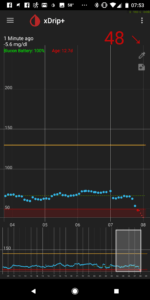 |
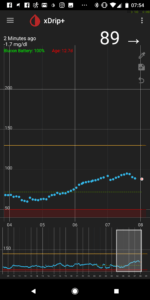 |
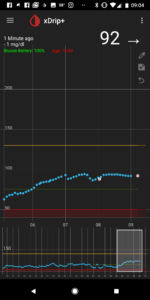 |
So now we come back to my doctor’s question of why I’m doing this. Well, #1 it’s interesting to see how my blood glucose reacts to food and activity. For the most part my readings are really stable because I stay pretty strict with eating keto. #2 reason is that I’m planning on incorporating the data into future n=1 experiments. Should you get one yourself if you’re not diabetic? Probably not, unless you’re crazy like me.

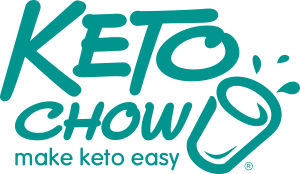
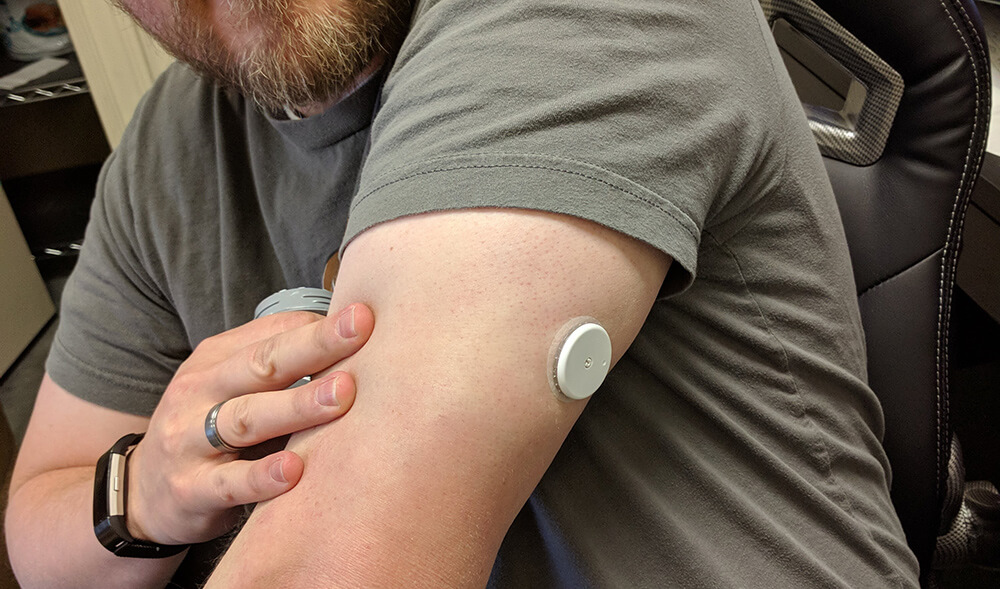






iOS apps for reading the NFC tag should be possible when iOS 12 rolls out. Devs get access to the NFC hardware in the iPhone for the first time with that update.
ORLY? about time! =)
Three years back, I purchased Nightrider BluCon to track my blood glucose level every now and then. The device is really helpful and has not given me a single connecting or any other issue.
I have one of those, it stopped giving me a reliable connection and I can’t use the original BlueCon with the new 14 day (US) sensor =(
I purchased Nightrider BluCon in August 2018, and till today it’s working as good as it did on the first day. I use the device with my Apple Watch, and it helps me check my readings from the watch without the need to carry my phone wherever I go. The device has given me an easier way to keep myself updated about my glucose value and manage the same wisely.